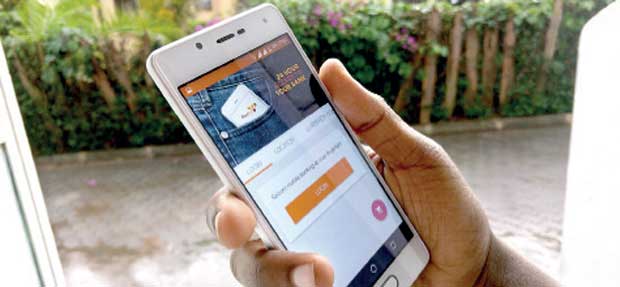10 Nov 2017 - {{hitsCtrl.values.hits}}

By Andrew Connell
First it was passwords. Then it was fingerprints. Now it is iris and facial recognition. The latest features on your smartphone are a key part of the evolving banking experience.
The debut of the original iPhone 10 years ago not only marked the dawn of the smartphone era but also laid the groundwork for the development of mobile banking. Prior to 2007, customers had to make their way to a branch or an ATM to do their banking. Online banking was an option but it offered limited on-the-go convenience at a time when Wi-Fi was patchy and PCs were heavy. Today, because smartphones seldom leave our hands, the distance between customers and banks has been all but eliminated.
The proliferation of smartphones is central to the stellar rise of mobile banking as a preferred method of managing money, yet it is often forgotten that early mobile platforms were little more than an extension of online banking. Remember the time when an entire website was just dumped onto an app without adjusting for the drastic reduction in screen size? We may have the smartphone to thank for the clutter-free interface now found on mobile and online banking platforms.
An overlooked fact – which also happens to be a major difference between mobile banking and online banking – is that your smartphone is also a smart security device. Only a few years ago, in order to log on to your online banking account, you would need to pull out your physical security device (which you most definitely did not carry with you at all times), punch in your personal identification number so that you could generate a security code and input said code before time expired. Nowadays your smartphone can do all the heavy lifting in user identification and verification. On many phones, all you need to do is scan your fingerprint to access your account and make a transaction.
The unveiling of the latest iPhone has drummed up plenty of interest around its new features and how some of them will be applied in banking. The launch of Face ID on the iPhone X will likely help popularize facial recognition as a form of user identification and verification. In fact, HSBC’s customers in China can already add payees and transfer money with a selfie. According to our research, more than 60 percent of Chinese believe that biometrics such as facial and fingerprint recognition will be the only way to access banking services within 10 years.
Advances in biometrics technology mean passwords may soon become a thing of the past, for you are your password. Voice recognition, which checks a large number of vocal characteristics, including cadence, speed and pronunciation, allows customers to access phone banking without a security number. The cutting edge in iris recognition analyses the veins in the white of an eye, adding an extra level of security to mobile banking. Small 3D scanners can record and recognize the unique pattern of veins in a finger and some banks have piloted finger vein scanners on ATMs.
It is too early to tell which technology will become the preferred or standard method of identification and verification but we know for a fact that banks must remain vigilant in protecting customer data, including biometric data.
Achieving the right balance between technology and the human touch is the recipe for providing the best possible banking experience
Another new iPhone feature that will play a more prominent role – if not in the current generation of smartphones, then surely in future ones – is augmented reality (AR). Some banks are already using AR to help customers locate branches and ATMs, while others display offers and deals to customers when they walk by or into shops.
It is not difficult to imagine AR being used in a more advanced manner. Perhaps you see a car you like. Once your smartphone recognizes the model and the price, it offers you a number of payment options, illustrating the interest rates, the number of payments and the amount repayable, including any charges. When you find an option that best suits you, you can complete the purchase – right there and then – and authenticate it with biometrics.
We are now 10 years into the smartphone era but advances in information and communications technology are still only beginning to transform the way we bank. It is impossible to predict with certainty how banking will look in 10 years’ time, just as a decade ago no one could have imagined that we would all be carrying banks in our pockets. What is certain is that banks’ application of innovation and technology will make the banking experience simpler, better, faster and more secure.
The future of banking will be a mix of brick-and-mortar and digital solutions. The role of the branch has already shifted: walk into a branch nowadays and it is increasingly common that customers are there seeking professional financial advice or assistance with complex transactions. Your smartphone, meanwhile, offers you the convenience of doing simple transactions anytime, anywhere.
Bank innovation has always shaped – and been shaped by – customer behaviour. But as phenomenal a tool as technology is, ultimately banking is all about relationships. Achieving the right balance between technology and the human touch is the recipe for providing the best possible banking experience.
(Andrew Connell is Global Head of Innovation and Partnerships and Asia Pacific Head of Digital,
RBWM, HSBC)
24 Nov 2024 2 hours ago
24 Nov 2024 4 hours ago
24 Nov 2024 5 hours ago
24 Nov 2024 6 hours ago